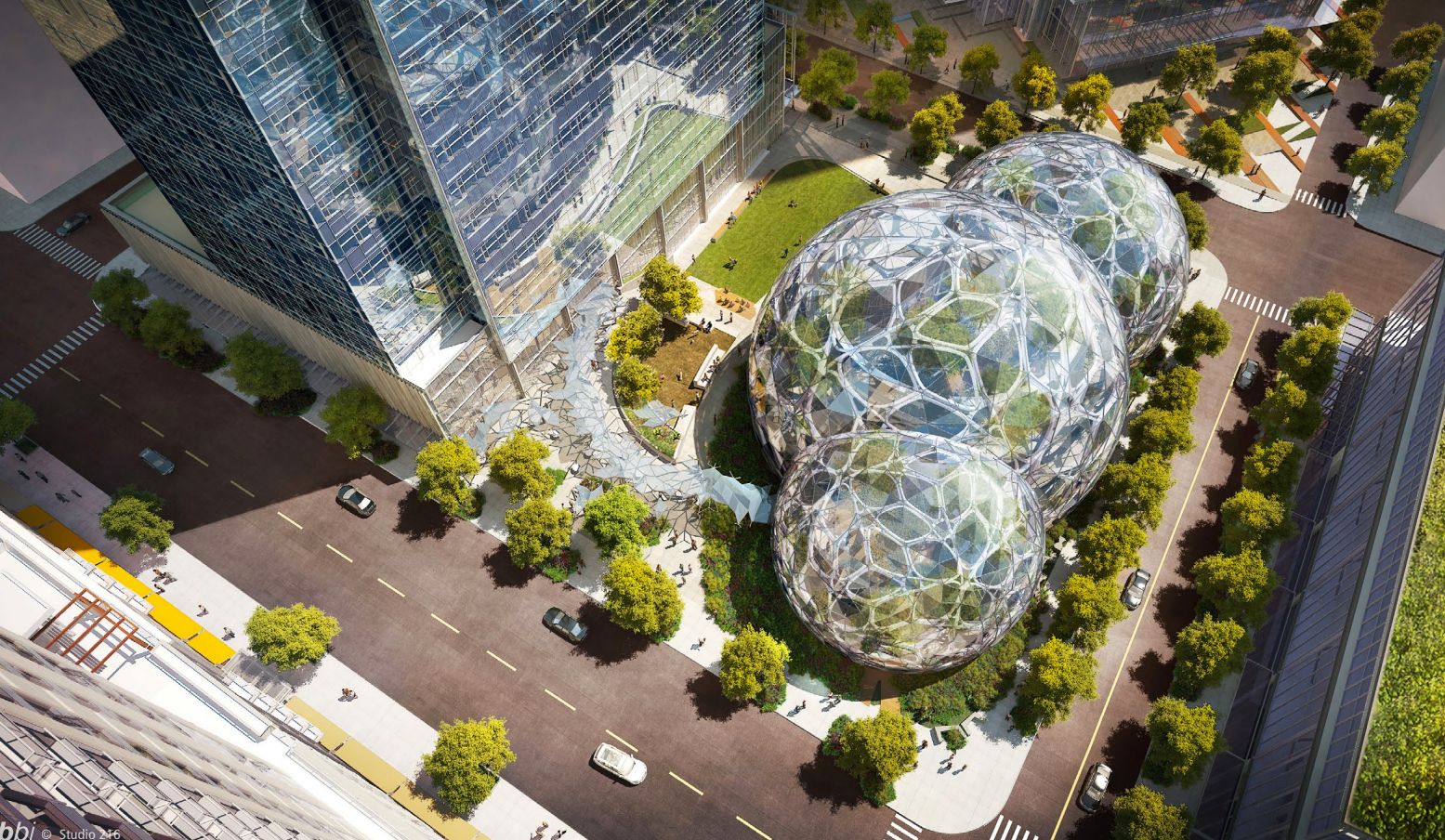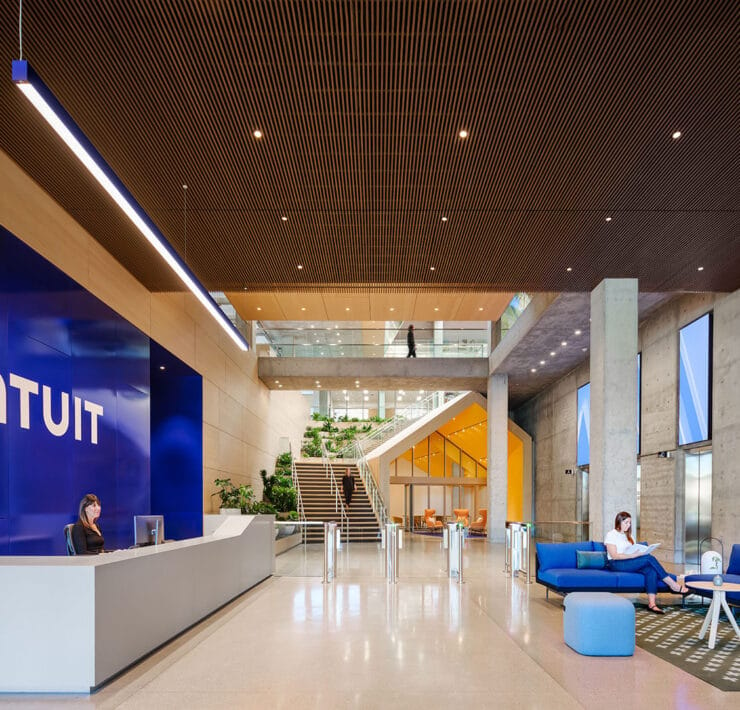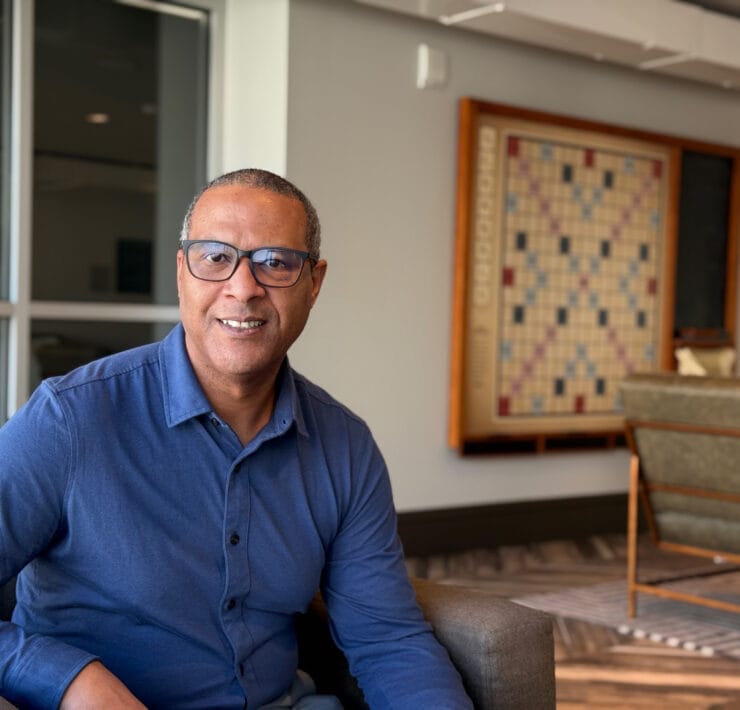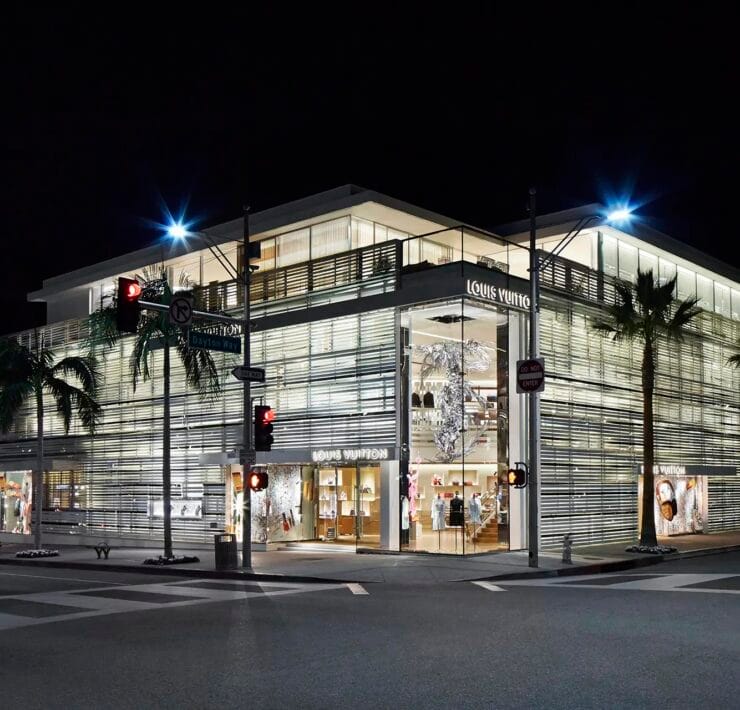While Amazon might be best known as the largest Internet retailer in the world, the company is also a leader in sustainability and environmentally conscious practices.
From small steps like its box recycling programs to larger efforts such as its wind and solar projects, which generate a shocking 3.6 million megawatt hours (MWh) of renewable energy annually, Amazon is making major strides in sustainability. This trend extends to the company’s recently expanded headquarters in downtown Seattle.
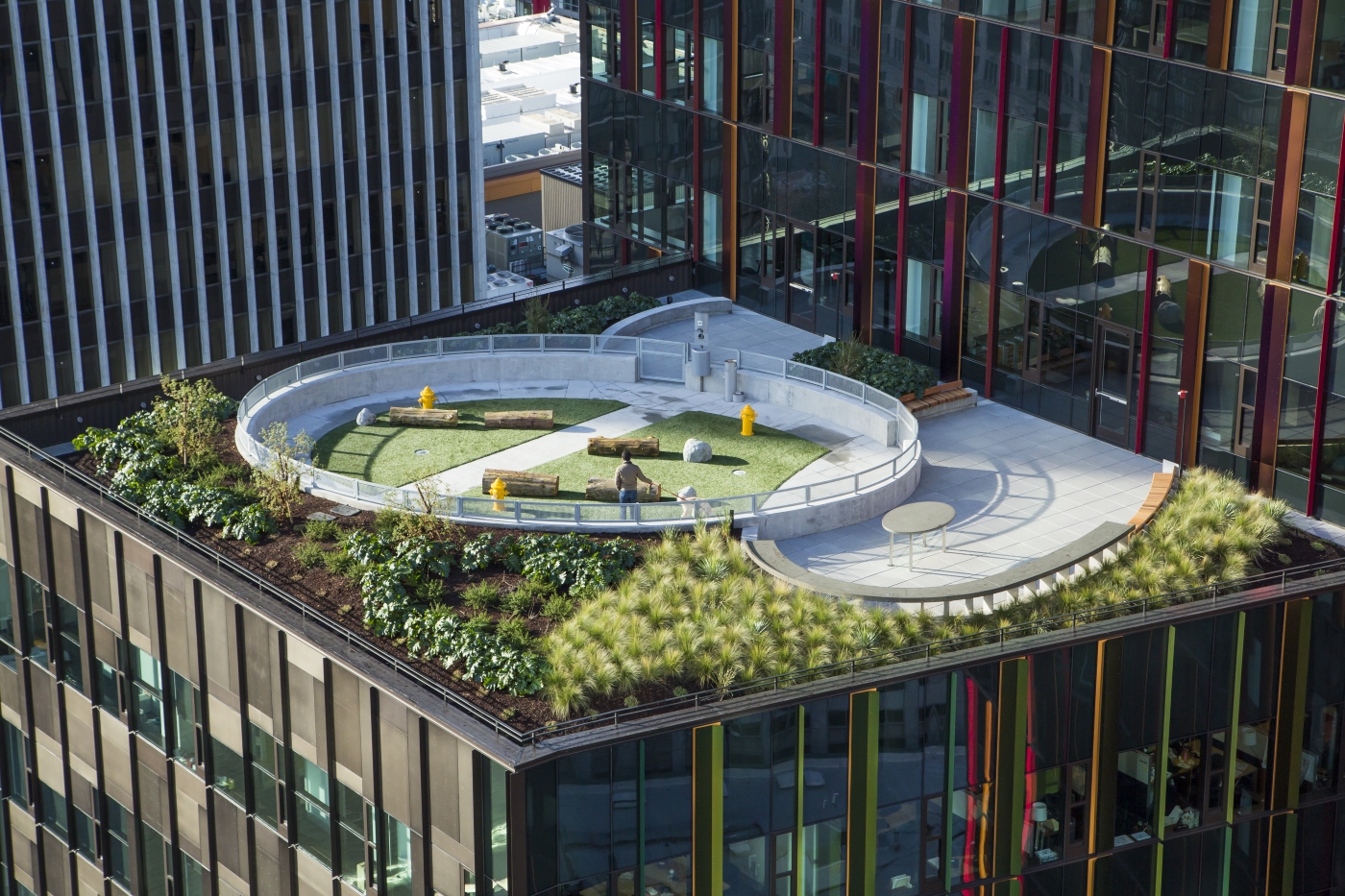
Photo from NBBJ
Building a Green Campus
After outgrowing its headquarters several years ago, Amazon invested in its hometown — building some 40 buildings in downtown Seattle while keeping a focus sustainability. Six of the buildings on Amazon’s Seattle campus have been awarded with the U.S. Green Building Council’s LEED Gold certification for sustainable design and construction methods, while 20 of the buildings were built using LEED standards. These buildings’ interiors feature salvaged and locally sourced woods, energy-efficient lighting and composting recycling alternatives.
Green roofs on Amazon’s Doppler building — which includes a dog park — and its Meeting Center capture and filter rainwater while also reducing the buildings’ heating and cooling loads. Additionally, the green roofs help to moderate the urban heat island effect along with improving local air quality.
Amazon’s newest buildings, which are located in the city’s Denny Triangle, are heated using recycled energy from a nearby data center making it four times more efficient than traditional heating methods. Dubbed a “district energy” system, the process works by capturing heat generated at a neighboring non-Amazon data center and recycling the heat through underground water pipes instead of venting it into the atmosphere.
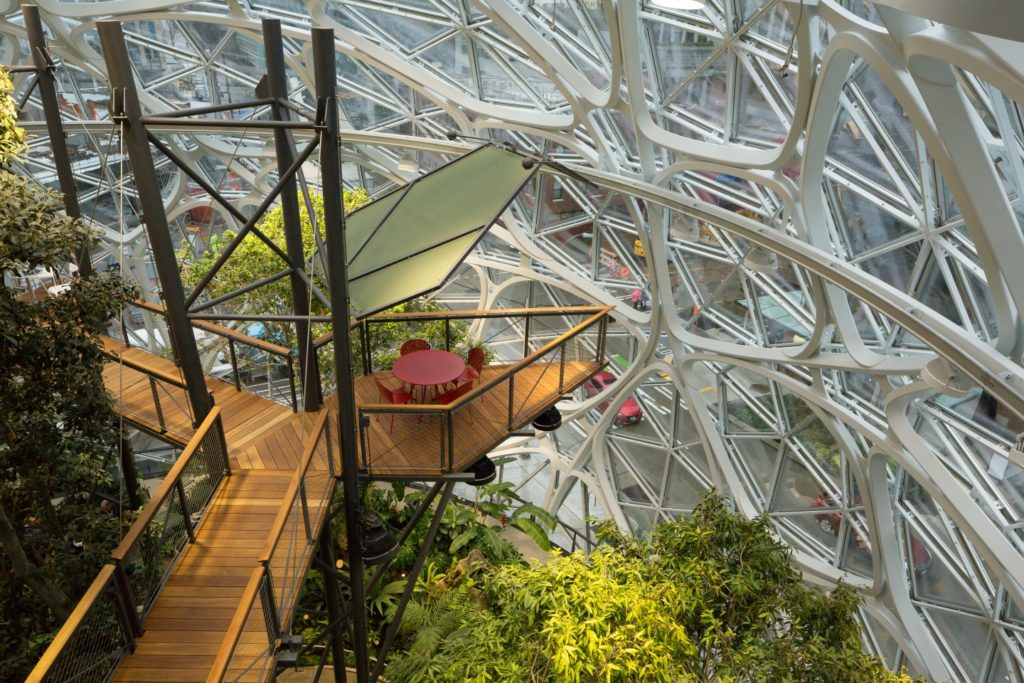
Photo from Seattle Magazine
Green Work Spaces
By joining the Department of Energy’s Workplace Charging Challenge, Amazon now offers PEV charging stations for electric vehicles for its more than 40,000 employees that work throughout the Seattle campus.
But the Internet giant took green to a whole new level this January, when it officially opened its Amazon Spheres — three spherical conservatories located on the company’s Seattle headquarters. The Spheres, which serve as an employee workspace, consist of three glass domes covered in pentagonal hexecontahedron panels. The domes range from three to four stories tall and house 40,000 plants, meeting spaces and soon retail stores.
One of the most spectacular, and possibly the most “green” features of the Spheres, is a large 90-foot vertical living wall. The plant life on the wall was grown in a quarter-acre of Amazon’s own greenhouse space and takes up over 3,000 square feet.
While they will soon be home to retail and possibly restaurants, the Spheres were created to offer an un-traditional workspace designed to stimulate employees by being emerged in natural plant life along with a blend of natural and LED lighting — a combination that has already been proven to enhance productivity.
Of course not all Seattle residents are in favor of Amazon’s recent developments. Some are lamenting Amazon’s footprint in their city, blaming the company for rent spikes and the demise of small businesses.
…bringing in Amazon is like a heroin injection; it’s a sharp spike that can balloon housing prices and flip entire neighborhoods in the blink of an eye. While a handful of local business owners and real estate developers profit handsomely, the city as a whole can suffer.
Nonetheless, others predict the new Seattle campus will quadruple in size over the next decade.
Katie is an LA-based writer who's covered everything from fashion startups to jazz legends, philanthropic NHL players and now design and architectural LED lighting. She is the former editor of a music trade magazine, enjoys writing about indie businesses and strongly believes that Edison bulbs complete all design projects. Katie can be reached at blog@alconlighting.com.

